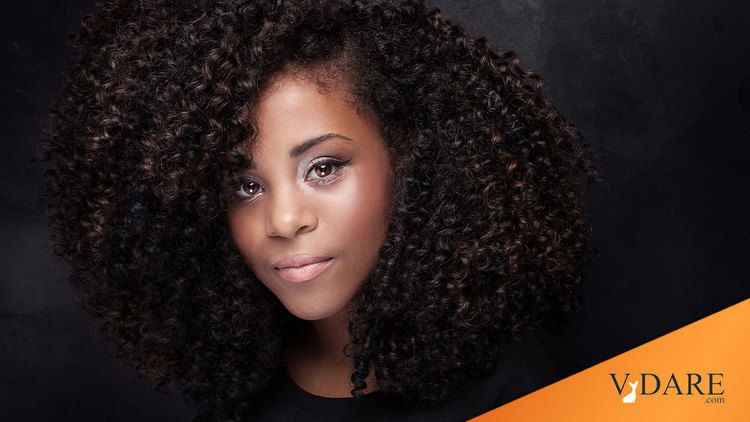
A Continuing NYT Series in One Million Episodes: "Me and My Hair"
By Steve Sailer
08/21/2022
Earlier: World War Hair Finally Has A War Memorial Statue
The Theory of Intersectionality proves that black women must have fascinating insights they’ve been storing up since 1619. Hence, leading media outlets in recent years have hired countless black women to tell us what’s really on their minds. Which, turns out to be…their hair.
From the New York Times Theater Page (with bold added):
In Two London Plays, Being Black Means Looking From the Outside In
Black characters in “Mad House” and “The Southbury Child” endure microaggressions and aspersions. The familiar scenarios hit home for our critic.
By Maya Phillips
Aug. 19, 2022LONDON — It was my second time here, and I kept trying to remember if I had felt as conspicuous during my first visit. I could count the number of other Black women I spotted during my five days here: the hotel receptionist with the French braid, whom I spoke with when I stopped in to ask to use the bathroom, the long-haired woman at my own hotel’s front desk, the woman talking rapidly into her cellphone outside a Starbucks, the two women (clearly tourists) with matching backpacks near the British Museum, and the young woman with the short, relaxed hair, who was clutching a shopping bag as she walked briskly down the street. That list isn’t comprehensive. But it’s not far off.
So when the eyes of a white person linger on me, as they did numerous times during this trip, my imagination tricks me into thinking every glance is a rebuke — whether because of my obvious Americanness; or because of my race, my tattoos or my pink hair.
